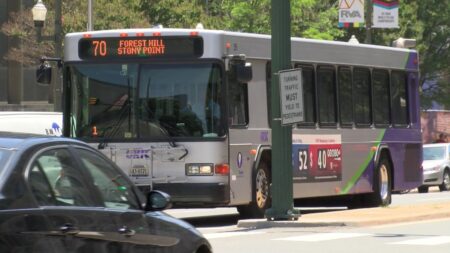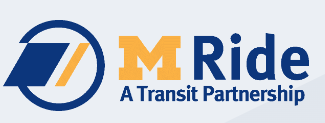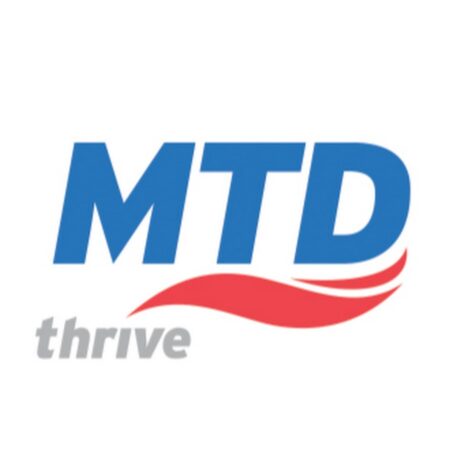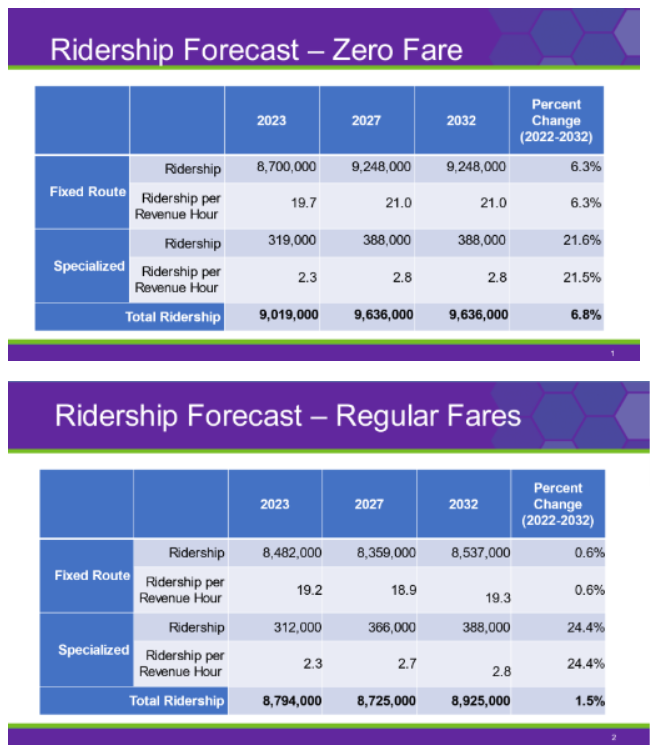What makes a fair fare? (Try saying that ten times fast…)
Foursquare ITP last covered zero-fare transit in August 2021. While the concept of “going fare free” was not new at that time, it was still making its way out of policy debates and into pilot programs. To date, more than 40 agencies in the United States now operate zero-fare service. I thought the time was right to revisit the topic and mention some interesting developments in the time since.

Several recent implementations have found benefits from ending fare collection. In one well-documented example, Boston’s ongoing pilot eliminated fares on three of their busiest routes. Prioritizing these routes makes good policy sense, since the people living in these neighborhoods tend to rely on transit for their transportation and live in neighborhoods with less access to services. Thus far, zero fares have resulted in greater ridership, real monetary savings for riders, and shifting trips from cars to transit. These are all promising signs.
But others point out that zero-fare transit isn’t really “free,” in the sense that the service must still be funded somehow. This may involve new taxes, but there’s a whole other discussion we won’t get into here about the extent to which the cost of collecting (and enforcing) fares offsets the change in revenue.
From my view, both sides are right. Zero-fare transit has the potential to unlock economic and social access for transit-dependent riders, but like any public program it must have sufficient funding. The trick is defining what “sufficient” is and figuring out the mechanism for delivering it. These conversations often get overly abstract and bogged down in moral arguments, but zero-fare transit has been around for a long time in the United States. Even before public transit agencies began offering zero-fare service to the general public, many were doing it through partnerships that function the same way.
Free Transit in University Towns
I keep returning to examples of free transit at universities. Whether urban or otherwise, universities’ compact, walkable, and mixed-use character makes them function would be totally obliterated by sprawling car-dom. To maintain these desirable qualities, the schools commonly negotiate with their local transit agencies so that their students and faculty ride without paying a fare when they board in exchange for the institution reconciling the costs later. These are uncontroversial examples where transit serves a population that often depends on it for everyday transportation.

One good example, and one that I benefitted from during my stint in Ann Arbor, is the partnership between the University of Michigan and the Ann Arbor Area Transportation Authority. The two organizations have an agreement where Michigan students and faculty swipe their university ID cards when boarding a bus, and the university pays for these fares. This situation will seem more familiar when compared to general public transit services, since fare subsidies for low-income, older adult, and students are a standard feature of public transportation in the United States. As students, we used to take a combination of campus buses and city transit all over town, and the vitality of the downtown would have been spoiled if we had to dodge cars and cruise for parking just to get to class.

As another example, the University of Illinois—Urbana-Champaign and the Champaign-Urbana Mass Transit District (CUMTD) have an arrangement that treats transit more like a public good. Rather than subsidizing trips individually, every student pays a small fee as part of their overall school fees to cover the cost of using transit, which the university pays to CUMTD each year. The university campus sits between two stand-alone towns, and the agricultural focus of the school means the whole region is much more spread out than a traditional college campus. The, so the transit system’s integration makes a huge difference: you could take a bus from a dorm on central campus or an apartment elsewhere off-campus to the far-flung veterinary school, potentially without a transfer. When I was there, the zero-fare integration made it possible for me to step out my door and get to the Amtrak station in downtown Champaign to go back to Chicago and see my parents without driving. Zero fares in Champaign had effects much further away: even I could have afforded a car, taking the bus instead meant no additional car in Champaign or Chicago, reducing VMT and congestion hundreds of miles away.
Free Transit in a Large City

While university students are a subset of the population, these two examples illustrate two poles of the debate about zero-fare transit: in many places, the question is not about whether transit should be free as a philosophical matter, but about how to structure a fare policy to the greatest benefit of riders who clearly depend on the service. Foursquare ITP recently worked with the Greater Richmond Transit Company (GRTC) in Virginia on just this question.
GRTC operates the primary public transit system in the Richmond, Virginia area. Their ridership fell substantially with the onset of the COVID-19 pandemic. With the help of state and federal funding infusions, GRTC shifted to zero-fare service in March 2020 to ensure that those depending on transit for transportation without remote alternatives would still be able to continue living their lives. However, unlike most other agencies, GRTC’s ridership rebounded almost immediately and has remained at near pre-pandemic levels since. This demonstrates the role GRTC plays in the community, and the extent to which people living in Richmond rely on transit for transportation. It’s hardly surprising: a pre-pandemic rider survey found that most riders tend to use transit as their primary mode of transportation.
Foursquare ITP worked with the GRTC board on their decision to extend the zero-fare policy until 2025. We found that the zero-fare scenario would result in the lowest costs and greatest ridership gains over the ten-year analysis horizon (6.8 percent increase compared to a 1.5 percent increase). Comparing the cost impacts to the agency and the service impacts to riders, GRTC determined that remaining zero-fare was more advantageous for them and the community.
As in the other examples presented above, it seems to me that the question of whether transit is an essential service to their community is settled. Perhaps the longstanding examples from university-transit partnerships could provide some inspiration for creative arrangements with their participating jurisdictions that strengthen their commitments to public transportation.
Maybe those arrangements could further spur investment in public transportation and continue the positive trends towards economic access and environmental stewardship from reduced vehicle miles traveled. Will fare-free transit work for your agency? Get in touch with Foursquare ITP to help you figure that out!